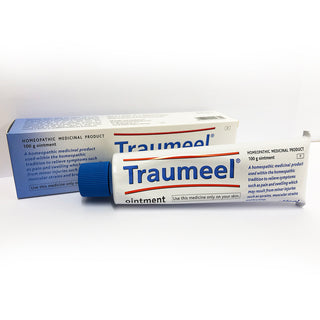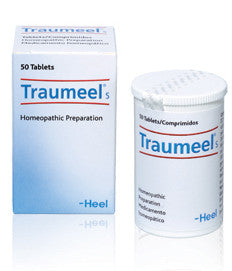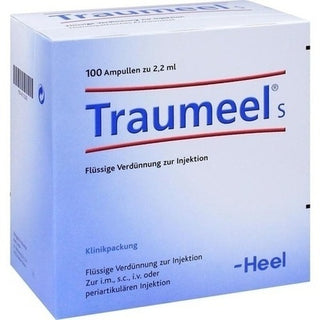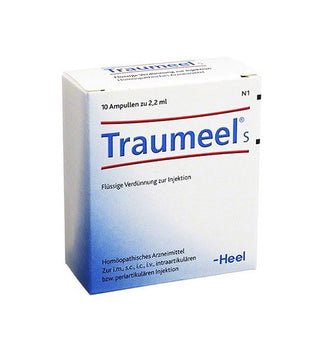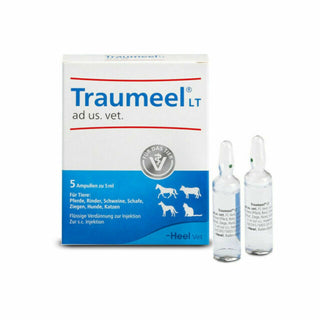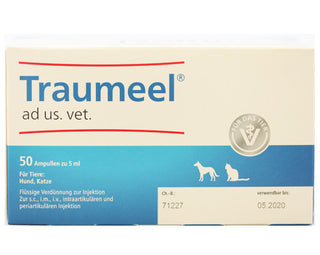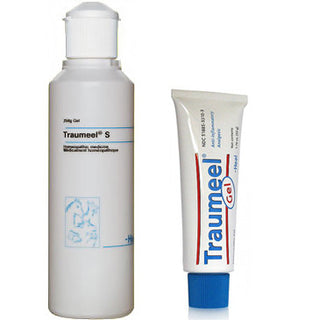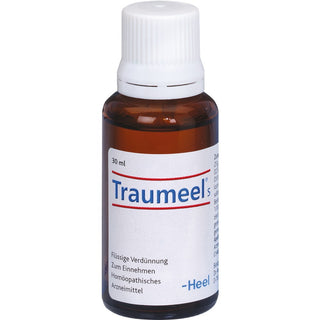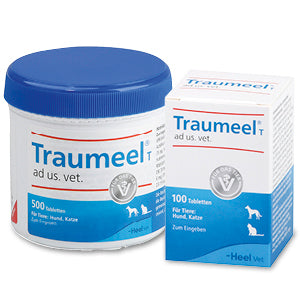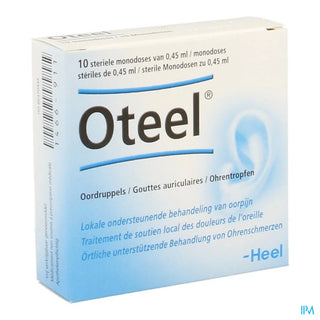Guna Flam - Therapeutic Application's of When to Use this Remedy
- GUNA FLAM is one of the most polyvalent of the GUNA Complexes.
Guided by a potent blend of IL-10 and AIL-1, and Beta-endorphins, GUNA FLAM is a highly anti-inflammatory and analgesic complex.
- GUNA FLAM is easy to use as an analgesic without contraindications. It quickly relieves pain, inflammation and fever.
- IL-10: the safest of the interleukins as it mostly dowregulates other inflammatory interleukins and curbs the inflammatory response.
- AIL-1: maintains the anti-inflammatory action of the complex, inhibiting catabolic mechanisms.
- BETA-ENDORPHINS induce antinociceptive reactions for effective pain relief.
ANTI-INFLAMMATORY for acute and chronic inflammation.
ANTIPYRETIC; reduces fever quickly to instill comfort in hot, painful conditions, allowing the patient to rest or sleep.
Guna Flam - Indications
- ALLERGY SYMPTOMS SUCH AS ITCHING
- ASTHMA DURING ACUTE ATTACK
- BACTERIAL INFECTION
- BRONCHITIS
- BURNS
- CARDIAC MANIFESTATIONS - NON-SPECIFIC
- COLD & FLU TREATMENT
- COLIC - INTESTINAL AND KIDNEY
- CONJUNCTIVITIS
- CONTUSIONS
- CYSTITIS FOR PAIN
- DIARRHEA AND COLITIS
- EYES - DRY & UVEITIS
- FEVER
- GASTROENTERITIS
- GOUT Pain
- HEADACHE
- IBS USUALLY IN ASSOCIATION WITH BOWEL
- LACERATIONS
- MENSTRUAL PAIN
- MIGRAINE
- NEPHROPATHIES - FOR PAIN
- OTITIS
- PAIN AND INFLAMMATION OF ALL TYPES
- PALPITATIONS
- POST-SURGICALLY FOR PAIN AND HEALING
- RESPIRATORY INFECTIONS
- RHEUMATISM
- SINUSITIS
- SOFT TISSUE TRAUMA
- URINARY TRACT INFECTIONS
- VACCINE - REACTION TO
- VIRAL INFECTION
PROTOCOLS WITH GUNA FLAM
GENERAL PROTOCOL FOR ACUTE PAIN & INFLAMMATION:
GUNA FLAM : 20-30 DROPS TID FOR 10 DAYS in a row, then bid for 2-4 weeks. Or prn up to 6 x day.
GENERAL ANALGESIC
- For all conditions including soft tissue, visceral, post-surgical and orthopaedic.
GENERAL PROTOCOL FOR INTERSTITIAL CYSTITIS:
- GUNA FLAM: 20 DROPS TID FOR 2-4 WEEKS, THEN BID FOR 1 MONTH +
- GUNA KIDNEY: 20 DROPS TID FOR 10 DAYS, THEN BID FOR 1 MONTH. TAKE BOTH REMEDIES TOGETHER
- OSTEOBIOS: 20 DROPS BID FOR 2-4 MONTHS.
GENERAL PROTOCOL FOR INFLUENZA :
ACUTE PHASE:- GUNA FLAM: 20 DROPS TID FOR 10 DAYS
- GUNA FLU: 1 VIAL PER DAY FOR 5 DAYS IN A ROW
- CITOMIX : CAN BE ADDED FOR SEVERE FLU: 3 PELLETS BID FOR 5-10 DAYS, THEN SID FOR 2 WEEKS (continue taking here even after flu symptoms resolve, in order to build immunity.)
GENERAL PROTOCOL FOR OTITIS:
- GUNA FLAM: 20 DROPS TID FOR 5 DAYS IN A ROW, THEN BID FOR 10 DAYS
- GUNA REACT: 3 PELLETS BID FOR 5 DAYS IN A ROW , THEN SID FOR 10 DAYS
- GUNA TONSIL: 3 PELLETS BID FOR 10 DAYS
TAKE ALL REMEDIES TOGETHER
- TIP: 1 drop of GUNA FLAM can be applied topically to the outer ear up to 3 x day.
N.B. here tonsil can replace react or vise versa.
For children under 15years of age, use only one third of the protocol and preferably diluting the remedies in a little water.
Remedies in drop form should be dosed as: 1 drop per age of child’s life (e.x. a seven year old would need 7 drops of the remedy,)and this diluted in a tsp of water. For children under 4 yrs, dose 1- 4 drops of the dilution water.
GENERAL PROTOCOL FOR HERPES LABIA & COLD SORES:
- GUNA FLAM: 20 DROPS TID FOR 7 DAYS, THEN BID FOR 5 DAYS;(extra doses prn for relief up to 6 X day)
- GUNA VIRUS: 3 PELLETS TID FOR 7 DAYS, THEN BID FOR 1 MONTH.
GENERAL PROTOCOL FOR BRONCHITIS:
- GUNA FLAM: 20 DROPS TID FOR 1 MONTH, THEN BID FOR 1 MONTH
- CITOMIX : 3 PELLETS BID FOR 10 DAYS, THEN SID FOR 1 MONTH +
- GAMMA 12: 20 DROPS BID FOR 7 DAYS, THEN SID FOR 1 MONTH
GENERAL PROTOCOL FOR IBS:
- GUNA FLAM: 20-30 DROPS TID FOR 10 DAYS, THEN BID FOR 1 MONTH
- IL-10: 20-30 DROPS BID FOR 2 MONTHS
- GUNA BOWEL:20 DROPS TID FOR 2 WEEKS, THEN BID FOR 1 MONTH.
THIS PROTOCOL CAN BE CONTINUED LONGER TERM UP TO 4 MONTHS WITHOUT STOPPING.
GENERAL PROTOCOL FOR SINUSITIS
- GUNA FLAM: 20 DROPS TID FOR 10 DAYS, THEN BID FOR 2-4 WEEKS
- GUNA SINUS SPRAY : UP TO 3 SPRAYS PER DAY DURING ACUTE PHASE (first 10 days.) OR PRN LONGTERM.
GENERAL PROTOCOL FOR INSULIN RESISTANCE RELATED TO OBESITY & DIABETES FOR PREVENTION & METABOLIC DISORDERS
- GUNA FLAM: 20 DROPS TID FOR 1 MONTH, THEN BID FOR 2 MONTHS, THEN SID LONG TERM (2-4 MONTHS)
- AIL-1: 20 DROPS BID FOR 2-4 MONTHS
- IL-10:: 30 DROPS AT BEDTIME FOR 2-4 MONTHS
- IGF-1: 20 DROPS BID FOR 1 MONTH, THEN SID FOR 2 MONTHS
- OMEOSPORT: 3 PELLETS BID OR TID FOR 2-4 MONTHS
OPTIONAL
- GUNA AA STRESS: 3 PELLETS BID FOR 2-4 MONTHS; TAKE WITH MEALS.
THE SCIENCE BEHIND: INTERLEUKIN-10 ( IL-10)
IL-10 is a potent component for the repression of pro-inflammatory cytokines and chemokines. In this regard, formulas containing IL-10 in physiological concentration are highly anti-inflammatory and polyvalent solutions for acute and chronic inflammation.
- A study by Eun-Gyoung Hong et. al. published in Diabetes in August 2010, demonstrates that IL-10 increases insu-lin sensitivity, therefore it can protect from obesity-associated macrophage infiltration and from consequential up-regulation of inflammatory cytokines and their deleterious signaling of glucose metabolism.
The study showed how insu-lin resistance and diabetes are, in fact, related to low grade chronic inflammation and that IL-10 can quell the chronic signaling of inflammatory response.
Thus the use of GUNA FLAM can have positive effects in protocols related to insu-lin resistance in metabolic disorders such as obesity and diabetes.
It is the concensus amidst mainstream medical research that pro-inflammatory cytokines are elevated in obese and diabetic humans and animals.
- IL-10, well known as a highly anti-inflammatory cytokine, follows suit, as research reports its expression is reduced in obese and diabetic subjects.
- In Cytokine Therapy, IL-10 is an anti-inflammatory component that downregulates inflammatory cytokines like Tumor Necrosis Factor (TNF) and Interleukin-1 b which are common in inflammatory pathologies.
IL-10 acts like cortisone without engaging catabolic reactions or side effects.
In this anti- inflammatory capacity, it can be used liberally to quell inflammation from all types of pathologies without interfering with healing, and will not be contraindicated with other medicines.
ANTI-INTERLEUKIN-1 (AIL-1)
- Anti-interleukin-1 is highly anti-inflammatory and mostly targets inflammatory and catabolic cytokines IL-1 and IL-6, as well as most other maleficent cytokines.
In conjunction with IL-10, it is active in peripheral signaling, especially in vascular disease to repair blood vessels. Thus it is applicable in pathologies of peripheral and brain CNS origins.
AIL-1 acts very much like a sentry keeping the anti-inflammatory signaling in the right direction; mostly by preventing activation by factors such as TNF override.
- Coupled to IL-10, this action is considerably enhanced.
Thus the combination within Flam provides an efficient and simple way to administer a highly anti-inflammatory component to the protocol.
Many other studies suggests that AIL-1 can intervene in nitric oxide synthase pathways especially in the HPA axis.
Specifically in pathways that change nitric oxide synthase pathways occurring in the brain that regulate the HPA axis activity.
- AIL-1 is also instrumental in maintaining the integrity and function of blood vessel walls.
BETA-ENDORPHINS
The addition of beta-endorphins in GUNA FLAM formula boosts its analgesic properties, because these molecules are endogenous to the peripheral nervous system.
Beta- endorphins typically bind to opioid receptors throughout the peripheral nerves and at central terminals of afferent neurons, peripheral sensory nerve fibers and dorsal root ganglia.
- Beta-endorphins bind quickly at the pre-synaptic level and inhibit the release of tachykinin substance P as well as other key components in the nociceptive pathway.
Since beta-endorphins are endogenous to the nervous system, an exogenous application is well received by the signaling channels involved in antinociceptive mechanisms.
- In fact, the more pain the more beta- endorphins are naturally produced, whereas OTC and prescription pain medicine can actually inhibit beta-endorphin synthesis.
Using beta- endorphins provides the nervous system and plasma with concentrated levels of beta- endorphins that effectively mediate pain.
Buy :- Guna Flam
Contact Us
Please Contact Us if you need more help


